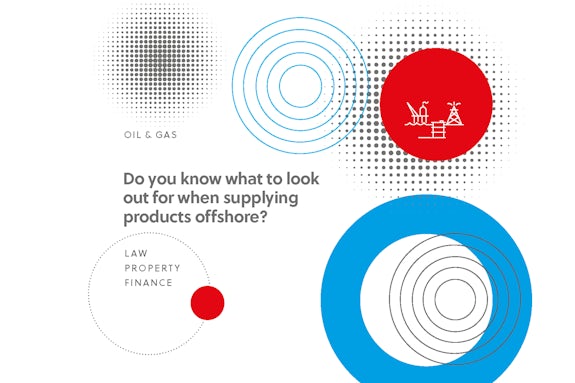Is there any difference when supplying products to an offshore environment? Yes – but there are many similarities in terms of risks and commercial terms across different industries.
What to look out for in product supply contracts generally
Whilst it is imperative to review your entire contract thoroughly, these are some of the provisions that need special attention in your product supply contracts:
Defects & Warranties
If you supply products, your customer will usually expect a defects warranty at a minimum. If there is an inherent defect in the product, usually you will be under a contractual obligation to repair or replace the defective product.
This can be supplemented by a general warranty whereby the products must comply with the contract and/or the specification included in the contract and/or be fit for purpose.
It is crucial to ensure there is a limited warranty period and to pay close attention to when that warranty period begins – e.g. a warranty period of 12 months from first deployment may be significantly longer than a warranty period of 24 months from delivery.
Delivery terms
Please take a look at my previous blog.
Things to keep an eye on here are:
- time of delivery,
- place of delivery,
- at what point title and risk pass to the customer, and
- what the consequences of late delivery will be.
Intellectual Property Rights
Depending on what your product is, you need to be incredibly careful with your IP clause. It is very important to ensure you are protecting and retaining the rights in any IP you create and need to use in the future. The IP clause could see some of your IP rights pass to your customer inadvertently – for some, IP is the lifeblood of their business, so please tread carefully.
Capped Liability
Arguably one of the most important provisions in your contract.
Make sure there is a cap
Make sure the cap is reasonable and linked to the work at hand – e.g. 100% of Contract Price is common, but if the Contract lasts for years and oversees multiple work scopes, it may be more appropriate to cap liability as a percentage of PO Price.
Be wary of carve-outs to the cap to avoid unlimited liability where you don’t expect it and tie-in your maximum liability with your insurance policies.
Governing Law / Disputes
Where will the contract be performed? If the extent of your obligations start and end in the UK, don’t get sucked into the contract being governed by the laws of Nigeria or Texas (for example). English law is readily accepted globally, but local laws will apply in certain cases regardless of what the contract says. You should consider whether arbitration (or other types of alternative dispute resolution) may be more appropriate in contracting with companies outside the UK.
Where do offshore contracts differ?
Some examples of what you need to look out for that may be different in offshore contracts:
Watch out for Retrieval / Recovery Costs
Whilst it is generally acceptable to be on the hook for repair/replacement costs for defective products, you should not accept the cost of retrieval/recovery/redelivery costs – this is of particular significance when supplying products to be deployed offshore (particularly subsea).
How does consequential loss indemnity impact on termination rights?
If your customer has the ability to terminate your contract for convenience, it is very important to ensure you are protected against long-lead costs – be sure to write this into your contract. Also, be wary of the consequential loss indemnity. Losses suffered as a result of termination could include loss of opportunity for example, which will generally fall within that consequential loss definition. It is crucial to take a long hard look at these provisions to keep yourself protected.
Do you know who you are contracting with?
Whilst joint ventures are not exclusive to the oil & gas industry, it is something you need to be aware of. You will often be contracting with the Operator, who is contracting on behalf of its co-venturers (who may obtain certain rights under the contract). You may also be subcontracting with a main contractor but giving away certain rights to the Operator. Don’t just take these things at face value – ensure you know who you are contracting with.
What do you need to know about indemnities?
Take a look at my previous blog on indemnities.
It is very common for offshore contracts to contain mutual hold harmless (MHH) provisions. This is acceptable in most cases, even if a little unnecessary for some product supply contracts.
These provisions are designed for when a company will have its people and/or property on another company’s premises. For product supply, that should only really be the case for inspection/testing purposes but the full MHH provisions are normally used. Be sure that those indemnities don’t go too far – you should have no liability in relation to pollution (other than on your own premises) for example.
Please ensure you check that your insurance policies and that of your counterpart marry up with your contract.
Conclusion – be aware of the offshore “nuances”
When supplying products for use offshore, there aren’t many differences and you need to be aware of the “normal” pitfalls, but please be mindful of those nuances that do exist in the oil & gas industry.
If you would like further information on the topic discussed in this blog, please contact Calum Crighton by email: ccrighton@gilsongray.co.uk or by phone: 0131 285 7841 / 07825 884 961. You can also view Calum’s profile by clicking here.








